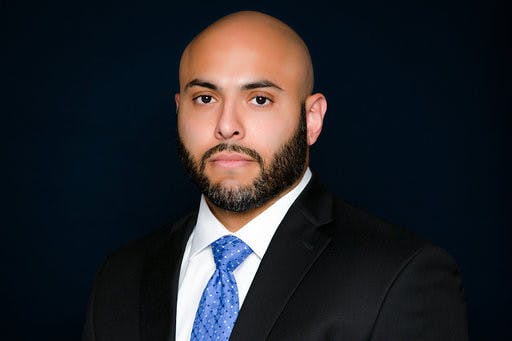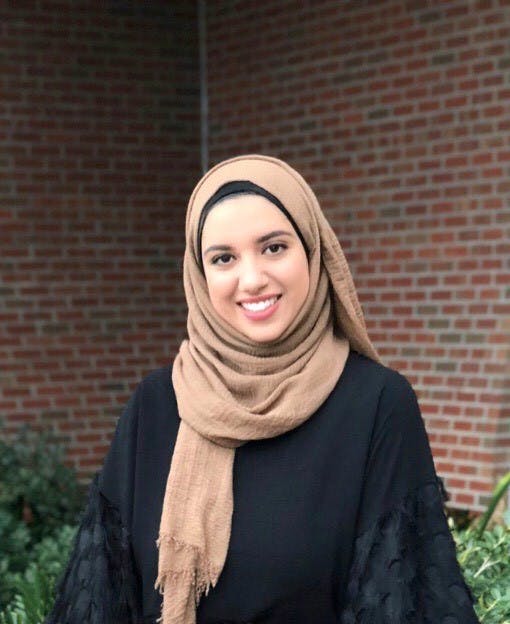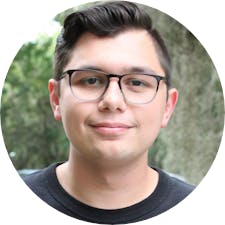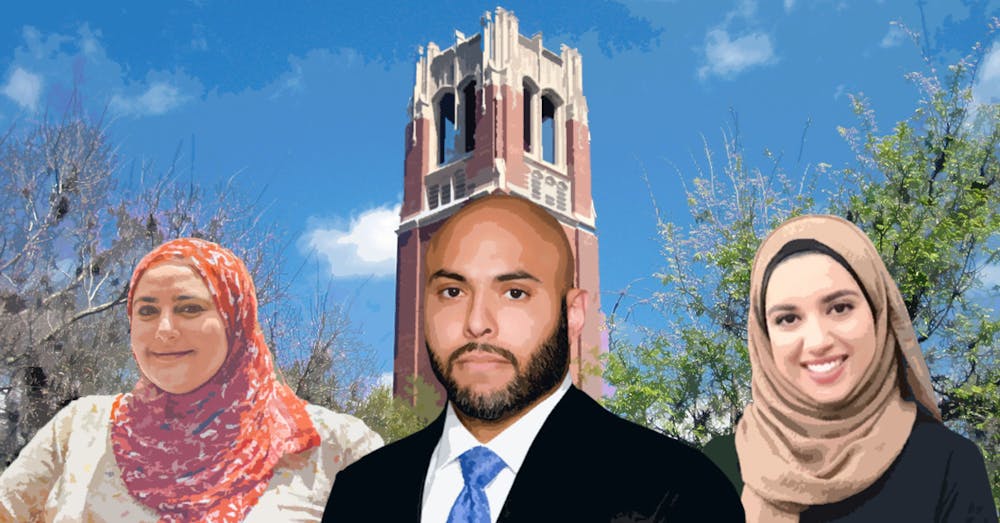One morning in 2001, Americans crowded around office TVs with colleagues, longed to hold the children they had just sent to school and made crude estimates as to how long it would take to recover all the bodies from downtown Manhattan.
It began like any ordinary Tuesday — until a few hours redefined the decades to come.
Footage of a plane slamming into the World Trade Center flashed across almost every screen in America. Black smoke clogged a clear New York day. And it wasn’t just paper and chairs falling out of the raging fireballs in the skyline. It was everyday Americans.
Workers. Parents. Friends.
Nearly 3,000 people were killed when terrorists hijacked four planes the morning of Sept.11, 2001. Two planes collided into the World Trade Center in Downtown Manhattan, and the ensuing collapse left the country’s largest city reduced to smog and debris. Another plane eviscerated the western side of the Pentagon, the U.S. military headquarters in Washington D.C.
United Flight 93, which the hijackers intended to fly into the Capitol, was pulverized at full speed in a field outside of Shanksville, Pennsylvania. Passengers had attempted to retake control of the plane.
From that moment, America became a fundamentally different place. The attacks remain a deep, oozing wound that sting the national psyche.
But fear, confusion and shame rippled through close-knit Muslim communities across the country. In one day, everything changed for a minority group already estranged from the American norm.
There were eyes relentlessly glued to them on buses. Constant “random security screenings.” Passive-aggressive bomb and terrorist jokes.
A new status as the American pariah.
Strangers stalked people — who they assumed were Muslims — in shopping malls, demanded to inspect their bags in airports and set their cars on fire. They tore off women’s hijabs, a religious veil worn by Muslim women, and shot innocent people dead in the street.
The contentious atmosphere was no different at UF.
The Alligator was flooded with editorials that debated the need for revenge through retaliatory war. Students wrote in to share the rampant discrimination Muslims faced, including when a flower shop turned away a student’s boyfriend for his religion. Even Gainesville Health and Fitness Centers issued a call for unity under columns detailing blooming bigotry.
Under increased scrutiny, UF’s Muslim students repeatedly defended themselves in print.
For two former UF students and a 4-year-old girl, 9/11 altered religion, identity and safety.

Iman Zawahry was president of Islam on Campus during 9/11. Now, Zawahry teaches media production, management and technology at UF’s College of Journalism and Communications.
Iman Zawahry was asleep in her Gainesville apartment when her fiancé woke her up. A fire was raging in New York.
Like any college student, Zawahry, then a 20-year-old UF religion and Middle Eastern languages and cultures senior, drifted off to sleep again. Classes would begin for the day just a few hours later.
Then, the phone calls poured in. She rushed to the TV, crowded alongside her cousin, roommate, best friend and fiancé. They all stared at the screen in collective horror.
“We all looked at each other in fear for what was happening in our community, in our American community,” she said.
Their horror soon transformed into worry as more details spread and more mourned across the country. News reporters shared the names of the Al-Qaeda operatives who pulled off the attacks. They were Arabs. The tactical leader of 9/11 came from her parents’ homeland: the Egyptian-born Mohammed Atta.
Zawahry, who grew up in Panama City, Florida, knew what came next.
As president of Islam on Campus, she prepared to organize in “proactive, protective and defensive mode.”
“Stay home. Don’t leave right now.”
She repeated those words every time she called her fellow IOC members. But she added extra emphasis when she spoke to those who were visibly Muslim.
“Even before Sept. 11, there were always hate crimes against Muslims in some way,” she said.
Disheartened by the tragedy, Zawahry instantly collaborated with interfaith organizations in Gainesville to plan a vigil for the victims of the attacks — a sign of solidarity among the city’s Muslim, Christian and Jewish worshippers.
But over the next few days and weeks, she found herself in the same uncomfortable position that many other American Muslims faced.
She had to defend herself against reactionaries. A perpetual task that still lingers today.
Incessant questions and conspiracy theories circulated, tying an American religious minority to a fanatical terrorist network that launched its attacks from the other side of the world.
Questions encircled her brain.
Was she supposed to explain ultraconservative interpretations of Islam, which don’t reflect the views of the religion’s billion adherents?
Should she, an American who wanted to mourn, be in a constant apology mode?
Did she owe anyone an explanation, as if she were somehow responsible?
Gainesville didn’t see the same level of violence against those suspected to be Muslim that other parts of the country did. What was most prevalent were the microaggressions that came with wearing a hijab in 2001.
“You speak well,” people would tell her. “I didn’t know that you could go out and do this.”
Despite the taunts and ignorant comments, much of the UF and Gainesville community stood in solidarity with Muslim students.
“That's what I really loved about being here in Gainesville is the emotional support from the interfaith community was just so amazing,” Zawahry said. “A tremendous amount of support all-around to where if someone wasn’t supportive it would stick it out to me.”
While students offered to walk Zawahry and other Muslim students to their cars, professors weren’t always as understanding.
A few days after 9/11, she emailed one of her religion professors to let him know that she wouldn’t make it to class that day. She shared her fears, and he responded with indifference, lamenting that all Americans were suffering.
That experience stayed with her to this day.
“When a student emails me personally and tells me something they’re concerned with, I offer emotional support,” she said. “But I didn’t get it from him at the time.”
Now, Zawahry teaches media production, management and technology at UF’s College of Journalism and Communications. She’s an award-winning filmmaker and serves as the director of the first ever American Muslim film grant.
Film is a way for her to uplift the Muslim community. Because if change mirrors a snail’s pace, how many Nike commercials would have featured a hijabi woman 20 years ago?

Mohammad Sherif grappled with balancing his identity as a son of Muslim immigrants and an American hurting from a terrorist attack. He noticed being visibly Muslim meant being a visible target.
A particularly painful toothache kept Mohammad Sherif from dozing off the morning of Sept. 11.
Wide awake, he flicked the TV on to what he thought was a movie. But he then flipped through the channels and realized all showed a gaping, black hole in the North Tower. Minutes later, the second plane hit the South Tower in real time.
The 19-year-old UF journalism junior rushed over to his fiancée. He dragged a sleepy Zawahry, who’s now his wife, to the TV to witness the tragedy.
“It didn’t seem real,” he said. “It was harrowing.”
Sherif grappled with balancing his identity as a son of Muslim immigrants and an American hurting from a terrorist attack.
“A lot of patriotic sentiments kind of turned into jingoistic ones against a minority group, and we see that happen often,” Sherif said. “But we also felt that as Americans, that this was a hijacking of our religion to do something that kind of denigrated and desecrated what we believe in as a country, which is that this is a land of opportunity.”
Sherif, now 40 and a law firm partner, grew up in Gainesville. His mother, a medical doctor. His father, a professor at UF. Both came to the U.S. from Egypt in 1977.
Even though Sherif is an Arab with brown skin, he recognized he carried a sense of privilege. And in 2001, being visibly Muslim meant being a visible target.
“It was easy to identify somebody wearing a headscarf,” he said. “I don't necessarily have anything that stands out like that. It made me aware that the plight of each Muslim is not the same.”
Gainesville’s reaction, at the time, was split. People screamed obscenities at him. Others linked arms with him at community gatherings.
But he still encounters the effects of 9/11 years later. He and his wife have even been approached by someone at an airport impersonating an FBI agent.
“People felt emboldened to take actions that were violative of individual rights,” he said. “Because collectively, it made sense that we as a nation feel like we needed to protect ourselves.”
That day, Sherif thought about everything American Muslims did to reflect a positive image and portrayal of their community. It was something they were always conscious of as a misunderstood minority group.
“It all seemed to have been for nothing,” he said. “Because what just happened was so cataclysmic, it was going to leave a stain for a very, very long time.”
Two decades later, Sherif can’t envision experiencing another pre-9/11 day. People have always poked fun at minority groups. But attacks escalated with more vitriol, aimed at people who looked like him and worshipped like him.

Wafaa Ateyah was 4 in 2001. The 24-year-old UF psychology doctoral student still feels the effects of the attacks two decades later.
Wafaa Ateyah doesn’t remember the planes slamming into the World Trade Center, the Pentagon or the Pennsylvania field.
But even as a 4-year-old in 2001, she vaguely remembers the pain — and the fear — the adults in the Gainesville Muslim community endured.
“I just hear people around me constantly talking about pre 9/11 days… they [Muslim women] felt much more comfortable wearing the hijab,” she said.
Ateyah, a 24-year-old UF psychology doctoral student, has worn a hijab since she was 11. It was a choice she made as an act of worship to God.
“When I wear the hijab, I wear it so when I walk into a room first people know I'm Muslim,” she said. “I think that's a beautiful thing because I think of my identity as being Muslim. People get to know me for who I am, not what I look like.”
To Ateyah, the hijab is both an obligation prescribed by God and a form of worship. The choice is a difficult one. Her life, at times, has been obscured by two tall, vertical shadows.
“Hijab has truly been a way of empowerment for me in a world that has these unrealistic beauty standards, where everyone just wants to look like everyone else,” she said. “The hijab really allows you to stand out and to really, really, truly learn how to love yourself.”
But some don’t view the hijab in the same way.
When she goes out into public spaces, she always deals with perpetual stares. People freeze in shock when they realize she was born in Gainesville and speaks English well. Their surprise almost always follows the inevitable question all immigrant children hear.
“Where are you really from?”
Her freshman year, a man inspected Ateyah while on the bus. He angrily murmured under his breath, but she couldn’t hear him.
The man reached his stop. As he exited the bus, he crudely uttered words Ateyah remembers years later: He wanted to rip her hijab off.
“I've experienced that a lot,” Ateyah said. “But I would definitely say what I experienced on a day-to-day basis is on the microaggression level, even to this day in graduate school.”
It hurts, but she’s used to it. She tries to not give the stares and comments too much attention. And it doesn’t deter her from her displaying her identity.
“The hijab is a constant reminder of who I am,” she wrote over text after her interview with the Alligator. “It’s a constant reminder of the higher being who is very central in my life.”
Despite the tension post 9/11, At eyah grew up identifying as a Muslim Arab American. Her faith is the most essential part of who she is. It supersedes her other identities, and it’s something that’s never going to change.
Sept. 11 became Sept. 12. And then, 2001 became 2002. But the national trauma of that morning remains. Twenty years later, any American can still feel reverberations of those two towers coming down. But among those who feel it most are American Muslims.

Christian Casale is a history senior and the university desk editor for The Alligator. In his spare time, he loves writing his bio for the website and watching movies alone in the dark.






